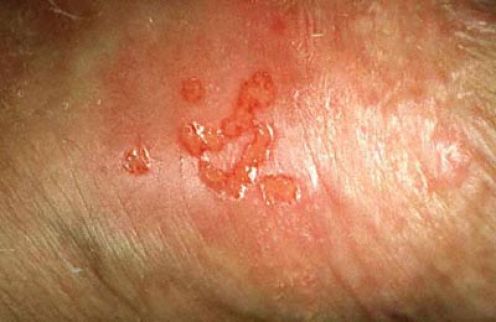Genital herpes is a very common skin disease and I encounter it very frequently in my The Woodlands dermatology and Conroe dermatology offices. Herpes Simplex Virus-2 (HSV-2) is the most common cause of genital herpes although some patients have genital herpes caused by HSV-1. It is estimated that 1/4 of all adults in the United States are infected with HSV-2 and approximately 3% of adults become infected each year. As this number seems very high, many people are infected with HSV-2 and may never experience an outbreak of genital herpes, so they are completely unaware of their infection but are still able to transmit herpes to their sexual partners. The first episode of a genital herpes outbreak is usually very severe resulting in multiple blisters/vesicles that quickly rupture to become ulcers. Surrounding the blisters/vesicles is usually a red color to the skin and these lesions are very painful. Some patients even experience flu like symptoms during their first episode. A recurrent episode is usually less severe with fewer lesions and milder pain. Significant swelling of the genitalia can accompany an outbreak. The diagnosis is usually by clinical appearance and history and is easily recognized by a board certified dermatologist. If the diagnosis is in doubt, it can be confirmed with a Tzanck smear which involves taking a scraping from the base of the blister and observing multinucleated giant cells, molding, and margination of the nuclei under microscopy. Serologic testing in which blood is tested for HSV-2 antibodies can be performed, or a Direct Fluorescent Antibody (DFA) test in which the base of the lesion is scraped and sent to the lab for antibody testing. Some clinicians obtain a viral culture or a skin biopsy to confirm the diagnosis. Genital herpes is spread by skin to skin contact usually during intercourse. Although active lesions are most infectious, it is still possible to transmit the virus when a patient is asymptomatic through shedding of the virus from the penis, vagina, cervix and rectum. In a monogamous relationship, there is a 10% chance per year that an infected partner will transmit genital herpes to the unaffected partner. If the infected partner is on chronic suppressive anti-viral treatment with Valtrex 500mg per day, the risk of transmission is reduced by 50%. A typical outbreak of genital herpes lasts one week. The lesions usually recur at the same anatomic region, but not at the exact same anatomic site. Oral antivirals are the mainstay of treatment. Patients can decide to take the antivirals as a daily suppressive therapy or intermittently when they first notice the signs of an outbreak. When taken intermittently, the antivirals only decrease the amount of time a patient has genital herpes by one day. Intermittent treatment with Valtrex is 500mg twice a day for three days once the prodrome is noticed. For chronic suppressive therapy, Valtrex is 500mg daily if the patient has less than 10 outbreaks a year and 1 gram daily if the patient has over 10 outbreaks in a year. Other antivirals that are used include: Famvir and Acyclovir. I urge any patient concerned that they are suffering from genital herpes to make an appointment in either our Woodlands dermatology or Conroe dermatology clinic as it is a very common disease that we encounter on a daily basis and one should not be ashamed to have genital herpes. Although it cannot be cured, there are very good treatments.





